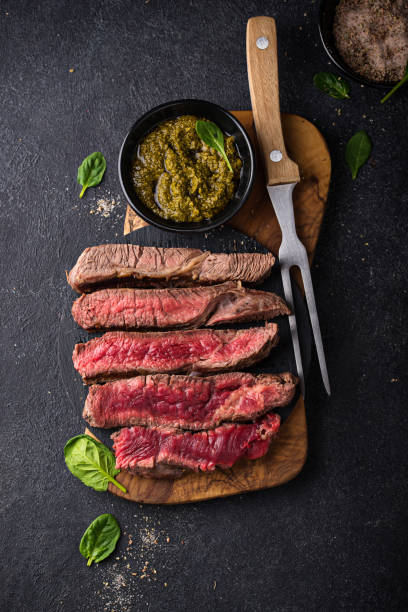Before we explore the intricacies of steak doneness, it’s crucial to understand why it matters. Achieving the perfect doneness level not only influences the flavor and texture of your steak but also ensures food safety. Whether you prefer your steak rare, medium-rare, medium, medium-well, or well-done, nailing the desired doneness transforms a good steak into an exceptional culinary experience.
The Science Behind Steak Doneness
Steak doneness is all about temperature and timing. The key factor at play is the internal temperature of the steak, which directly affects its texture and flavor. Here’s a brief overview of the science behind steak doneness:
- Rare (120-130°F / 49-54°C): At this stage, the steak’s center is cool and red, resulting in a tender, juicy, and incredibly flavorful bite.
- Medium-Rare (130-140°F / 54-60°C): The center is warmer, transitioning from red to pink, delivering a perfect balance of tenderness and flavor.
- Medium (140-155°F / 60-68°C): As the steak cooks further, the pink center becomes slightly firmer and less juicy.
- Medium-Well (155-165°F / 68-74°C): The pink disappears, and the steak becomes firmer, with a hint of pink at the center.
- Well-Done (165°F+ / 74°C+): At this stage, the steak is fully cooked, with no pink, resulting in a firmer texture and less juice.
Mastering the Art of Perfect Steak Doneness
Achieving the ideal steak doneness requires precision. Here are some essential steps to help you master this culinary art:
- Invest in a Meat Thermometer: A reliable meat thermometer is your best friend when it comes to cooking steaks to perfection. Insert it into the thickest part of the steak to monitor the internal temperature accurately.
- Know Your Cut: Different cuts have varying fat content and muscle structures, affecting their ideal doneness. For example, a well-marbled ribeye may be best enjoyed at medium-rare, while a lean sirloin might shine at medium.
- Rest Your Steak: After cooking, let your steak rest for a few minutes. This allows the juices to redistribute, ensuring a juicy and flavorful bite.
Beyond the Basics: Expert Tips for Steak Doneness
For those looking to elevate their steak game further, here are some expert tips:
- Reverse Searing: Start by cooking your steak at a lower temperature, then finish with a high-heat sear for a beautifully browned crust.
- Sous Vide Cooking: Consider using sous vide, a method that involves cooking the steak in a water bath at a precise temperature before searing it for a perfect finish.
- Seasoning: Don’t forget to season your steak generously with salt and pepper before cooking to enhance its flavor.
- Restaurant-Quality Searing: Achieve restaurant-level searing by patting your steak dry before searing it in a hot, well-oiled pan.
Savory Steak Recipes to Practice Your Skills
Now that you’re armed with the knowledge of steak doneness, it’s time to put it into practice with some delectable steak recipes. Whether you’re a fan of the classic ribeye, the elegant filet mignon, or the robust flavor of a New York strip, there’s a recipe to suit your taste. Experiment with different cuts, seasonings, and cooking techniques to refine your skills and create memorable steak dinners at home.
